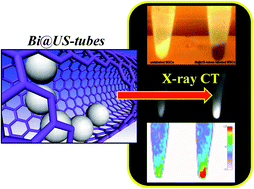*
Corresponding authors
a
Department of Chemistry, Smalley Institute for Nanoscale Science and Technology MS-60, Rice University, P. O. Box 1892, Houston, TX 77251-1892, USA
E-mail:
durango@rice.edu
Fax: +1 713 348 5155
Tel: +1 713 348 3268
b
Department of Bioengineering, Rice University, MS-142, P. O. Box 1892, Houston, TX 77251-1892, USA
c
Texas Center for Superconductivity at the University of Houston, University of Houston, Houston, TX 77204-5002, USA
d
Department of Radiology, St. Luke's Episcopal Hospital, 6720 Bertner Avenue, MC 2-270, Houston, TX 77030-2697, USA
e
Stem Cell Center, Texas Heart Institute at St. Luke's Episcopal Hospital, MC 2-255, P. O. Box 20345, Houston, TX 77225-0345, USA


 Please wait while we load your content...
Please wait while we load your content...